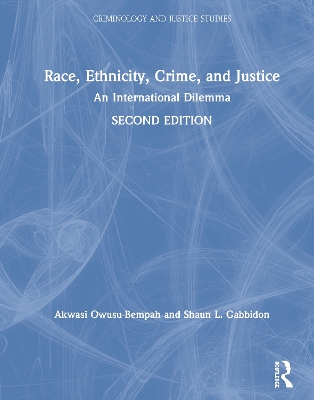Criminology and Justice Studies
3 total works
A Theory of African American Offending
by James D. Unnever and Shaun L. Gabbidon
Race, Ethnicity, Crime, and Justice
by Akwasi Owusu-Bempah and Shaun L. Gabbidon
Race, Ethnicity, Crime, and Justice: An International Dilemma, Second Edition, takes a unique comparative approach to the exploration of race- and ethnicity-related justice issues in five countries around the world.
Using the colonial model as a theoretical lens, Owusu-Bempah and Gabbidon analyse data from Great Britain, the United States, Canada, Australia, and South Africa. These international case studies help students contextualize race and justice issues within and across nations. Concise historical framing illuminates today’s racial dynamics in these diverse justice systems, and accessible theory grounds the comparison of crime and justice data from the early 21st century with current statistics. A new concluding chapter revisits the question of where these nations fit in the global context of state and non-state actors and of ethnic and racial justice issues.
This new edition is suitable for use as a core or supplemental text for advanced undergraduates and early graduate courses on race and crime, minorities and criminal justice, diversity in criminal justice, and comparative justice systems. It is also appropriate for use in sociology and ethnic studies courses that focus on race and crime.
Ideal for use in either crime theory or race and crime courses, this is the only text to look at the array of explanations for crime as they relate to racial and ethnic populations. Each chapter begins with a historical review of each theoretical perspective and how its original formulation and more recent derivatives account for racial/ethnic differences. The theoretical perspectives include those based on religion, biology, social disorganization/strain, subculture, labeling, conflict, social control, colonial, and feminism. The author considers which perspectives have shown the most promise in the area of race/ethnicity and crime.


